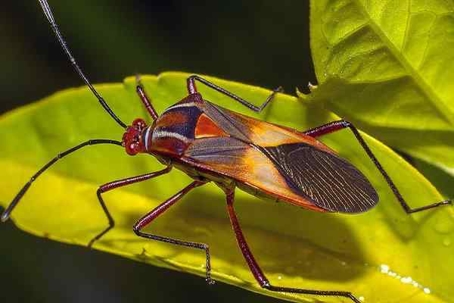How To Identify Chinch Bug Damage In Your Houston Yard
There are many things that can cause you to have dead patches of grass in your Houston yard. Moles can tunnel into your yard and damage the roots of your turfgrass. Gophers can dig soil out onto your grass and smother it. Voles can chew runways through your grass and leave trails of dead grass. Caterpillars can eat blades of grass from the top down. Grubs can feed on the roots of your grass and cause it to become brown and die.
There are also natural conditions that can cause your grass to be damaged. Long periods of drought can put stress on your turfgrass and cause dry, dead areas. Brown patch fungus can attack the tops of your grass blades and cause them to turn yellow and eventually kill them. Grey leaf spot can cause your grass to look olive green and brown before it dies off.
So how can you tell when chinch bugs are the pest you're dealing with in your Houston yard? It can be tricky. But we have a few tips for getting to the bottom of this mystery.
What Chinch Bugs Look Like
If you see chinch bugs crawling around, that is a pretty good sign that you have a chinch bug infestation. These insects have six legs, two antennae, and are an elongated oval shape. They are only about ¼ of an inch long. That is really small. They are usually a mixture of white and black but may look different depending on the developmental stage of the insect and the species of chinch bug you're dealing with. If you need assistance with identifying a pest in your yard, you can capture it and send us a picture or you can take a look on the internet for chinch bugs and see if there are any that resemble the insect you've taken a picture of or collected. Capturing a chinch bug (or two or three) is fairly easy with a piece of clear packaging tape.
What Chinch Bug Damage Looks Like
The way a chinch bug damages your grass is slightly different than the other pests listed above. A chinch bug will stick its mouthparts into a blade of grass and suck the juices out. During the feeding process, toxins are introduced. These toxins make the grass turn yellow. This may cause you to think you have brown patch fungus. It can also be tricky to identify chinch bug damage because chinch bugs are prone to attack lawns that have drought stress. Keep a few things in mind.
Damage caused by chinch bugs is likely to be close to concrete because concrete radiates heat. It also going to be on top of grass that has shallow soil and sits on a concrete base.
The damage caused by chinch bugs will cause wounds on your grass blades.
You're likely to see chinch bugs crawling around. If you don't, you can pour a bucket of water into one spot and wait a few minutes. The chinch bugs should climb right out where you can see them.
Are chinch bugs dangerous?
Yes. If you're a piece of turfgrass. But if you're a human, you don't have too much to worry about. These insects are not considered a threat to people.
What do I do about chinch bugs?
It can be complicated dealing with any lawn pest because insects can adapt and grow a tolerance to chemicals. The best course of action is to call a licensed pest control company and have your pest problem properly diagnosed and treated. For assistance with this in the Greater Houston area, remember that Modern Pest Control is always available to help you get control of pests in your yard or inside your home.

